Everyone loves to save money. For folks like me, a good deal on guns and ammo means more money for…guns and ammo. While it’s been a hot minute since my last firearm purchase, I’m a regular consumer of ammunition and it isn’t cheap. As a consequence, my ammunition buying decisions are a constant balance between reloading and factory ammo. Cost is frequently cited as one of the biggest benefits of reloading ammunition compared to buying it off the shelf.
While cost reduction is a great reason to get into reloading, there are a multitude of other reasons beyond saving some hard-earned cash. In addition, reloading has some drawbacks that some of us aren’t always keen on when getting started. So, sit back, and let’s discuss the pros and cons of reloading vs factory ammo from someone who’s spent a small fortune on reloading supplies and factory ammunition.
Reloading vs Factory: Pressing Your Own Ammo
Not all ammunition is equal. In the gamut of reloading vs factory ammo, I’ve happily experienced a level of quality control — or lack thereof when careless — from reloading that you don’t always get from the factory. After enduring the benefits and drawbacks of reloading ammunition over the years, I’ve noticed a few broad pros and cons to reloading your own ammunition.
Pros
Variety and Availability
Without question, reloading offers an unprecedented load variety for any chosen caliber. For example, I’m lucky enough to live within a 30-minute drive of about twenty gun stores. While those stores have great ammo variety, they are practically incapable of offering the options presented by reloading. The load combinations available with reloading allow you to tune a cartridge specifically to your rifle or pistol. You can adjust bullet weight/construction, powder charge/type, primer, and case type. The customization available with reloading is unprecedented compared to purchasing what is normally available from manufacturers.
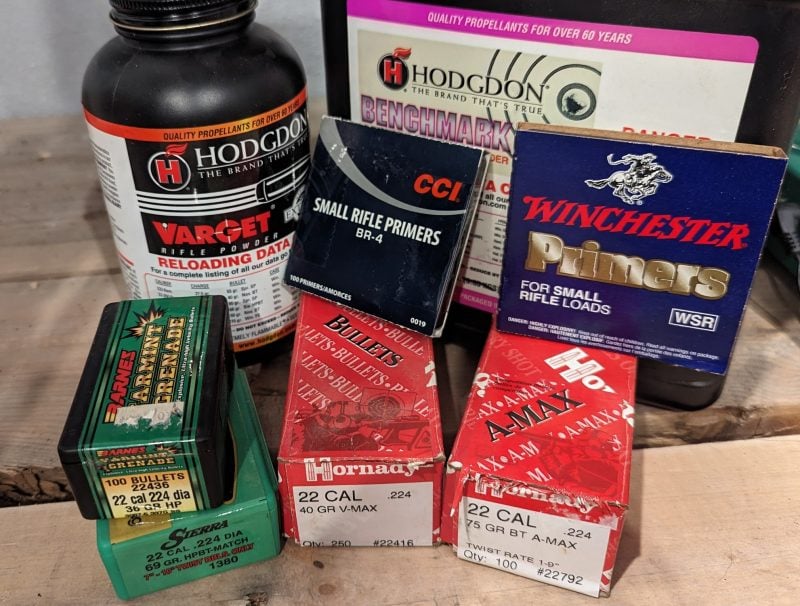
I reload a wide variety of cartridges and have a special love for the .44 Special and Magnum. Unfortunately, cartridge options and availability are extremely spotty. It’s a “current” cartridge, but not one popular enough to be stocked in significant quantities or variety at local gun shops. If you reload, the options expand drastically. For example, Sierra bullets offers six different .44 Magnum options with bullet weights ranging from 180 grains up to 300 grains. In addition, the powder options for each bullet range from 12 to nearly 20 different powder types with varying charge weights. If you want a true full-power magnum or “light” magnum, reloading affords you the luxury of adjusting powder type/charge and bullet weight/type for your needs, wants, and deepest shooting desires. This isn’t true with just hard-to-find cartridges. Sierra’s offerings for the venerable .223 Remington include 10 different bullets weighing anywhere from 40 to 80 grains. That’s one bullet brand. The combinations and options are endless.
Cost
Above, I briefly touched on .44 Magnum reloading options. I’m sure the nagging question was, “What’s the cost savings?” This is a bit of a loaded question (pun intended). Shooting volume is a big cost-saving factor with reloading. The initial investment of reloading equipment (I’ll address this shortly) hurts up-front savings. However, once invested, the savings are significant. When pondering the benefits of reloading vs factory ammo, reloading comes out with a huge lead in this category as shooting volume increases.
Returning to the .44 Magnum, I reload .44 Mag target rounds for as little as $0.65 per round. Conversely, factory target .44 Mag runs around $0.90 per round. Some years ago, I attended a revolver course and took along my beloved Smith and Wesson Model 69 in .44 Magnum. After 500 rounds of light magnums throughout the day, I enjoyed a sore wrist and about $125 in cost savings. If I shot higher quality ammunition from the factory, like Hornady Custom 200-grain XTP, I would have paid around $1.50 per trigger pull. With reloading, my cost was $0.83 per round. Over the course of the same class, I’d save $335 if shooting XTP bullets. While the savings per round shrinks with more popular calibers like 9mm and .223 Remington (around 10-20 cents per round), you’re still saving money and enjoying your own “custom” ammunition.
Cons
Up-front Investment
Here’s the dirty side of reloading — start-up is expensive. Over the years, I’ve sunk several thousand dollars into reloading equipment. While not everyone needs a Dillon 1050 to get started, you’re going to float into the $500 range for reliable and durable reloading equipment. RCBS, Dillon, Lee, Hornady, and Redding offer some great packages to get started. However, it still stings the pocketbook up front. If reloading for something you might shoot 10 or 20 times a year, it’s not worth it. If shooting hundreds of rounds annually or looking for the perfect load for your custom firearm, reloading is definitely worth it.
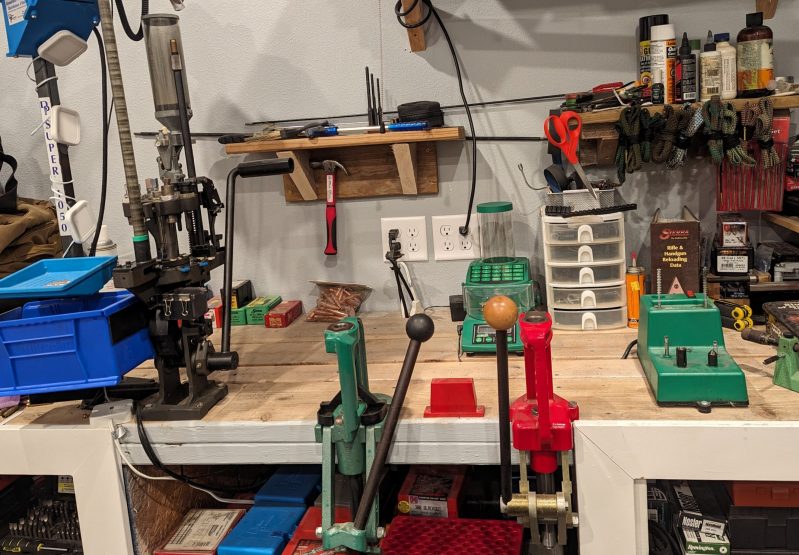
I cannot emphasize this enough — buy once, cry once when it comes to reloading equipment. Quality equipment will last decades and possibly into the next generation. Most of my reloading equipment is in its second decade of use and has plenty of life left. Unfortunately, the things I cut corners on — like scales, measures, and dies — became financial losses. Ultimately, sit down, do the math, and take the time to find your up-front cost versus annual shooting volume. If it makes financial sense, reloading may be a great option. Once the money is factored in, let’s take a look at the next “con” of reloading.
Time Spent
Unfortunately, there are only 24 hours in the day. As a friend once said, there was a time he’d do things to save money but now he’d much rather pay someone else to do the work so he can have the time available. While sound words of wisdom, reloading is a somewhat cathartic and therapeutic process. Like any other hobby, time spent producing ammo isn’t cost-effective if billed hourly. Nevertheless, the process is enjoyable. Reloading is like any other hobby. Think of it as knitting or crocheting but with guns.
Reloading vs Factory: Bought not Built
Factory ammunition is convenient and normally reliable. The breadth of some caliber options can rival those offered with reloading. When considering factory ammunition against reloading your own, there are some inherent benefits — and drawbacks — to buying off the shelf or online.
Pros
Convenience
There’s little debate behind the simplicity of going online or walking into a store and purchasing what you need. Factory ammunition is extremely convenient. Over the last year, I’ve reloaded some, but have largely turned to factory ammunition to keep up with my shooting volume. While it’s a little more expensive with 9mm and .223, the time saved on the reloading press is worth it in those instances.
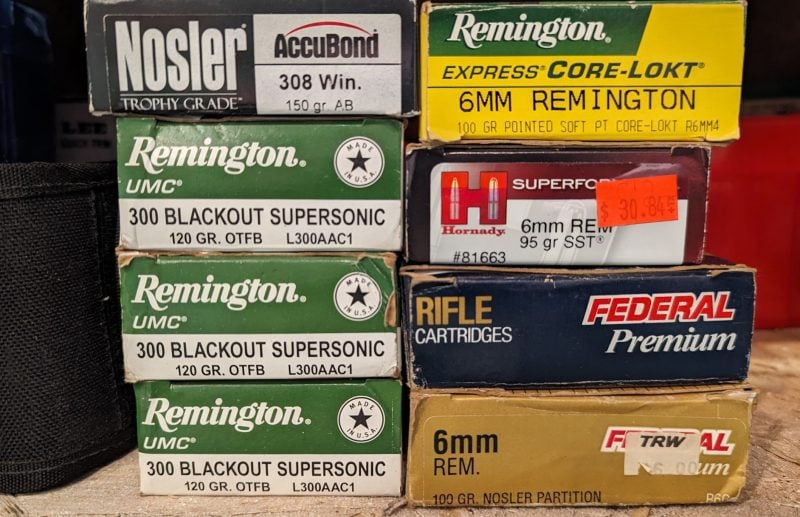
Earlier, I discussed how reloading expands your options for bullets, powders, and overall components. There’s a flip side to this. Just as factory ammunition can undergo runs and be hard to get, so can reloading components. When panic-buying hits; popular powders, primers, and bullets are re-routed to ammunition manufacturers. It’s a double-edged sword and factory ammunition is sometimes more readily available than components for your favorite handload.
Warranty
When you purchased your last firearm, did you read the owner’s manual? I hope so, but I promise I won’t judge you if you didn’t. If you read the fine print of the manufacturer’s warranty (if there is one), you’ll often find language expressly stating that reloaded or “remanufactured” ammunition voids the warranty. While there’s nothing inherently wrong with shooting reloaded ammunition through a firearm, there’s always the risk of a squib (no powder charge) or overcharged round.
After reloading tens of thousands of rounds, I’ve experienced one or two squibs (a price for lacking attention during the reloading process) but never an overcharged round. By exercising appropriate quality control during the reloading process, you can avoid these issues. Regardless, factory ammunition will not void your warranty if something goes catastrophically wrong.
Cons
Quality Control
I’ll start with an immediate disclaimer: factory ammunition (for the most part) is reliable, reputable, and safe to shoot through any modern firearm. With that out of the way, let’s get into why quality control is a con with factory ammunition. With reloading, ammo is as precise as you’re willing to make it be. Accordingly, you can have a level of scrutiny that is uncommon with most factory ammunition.
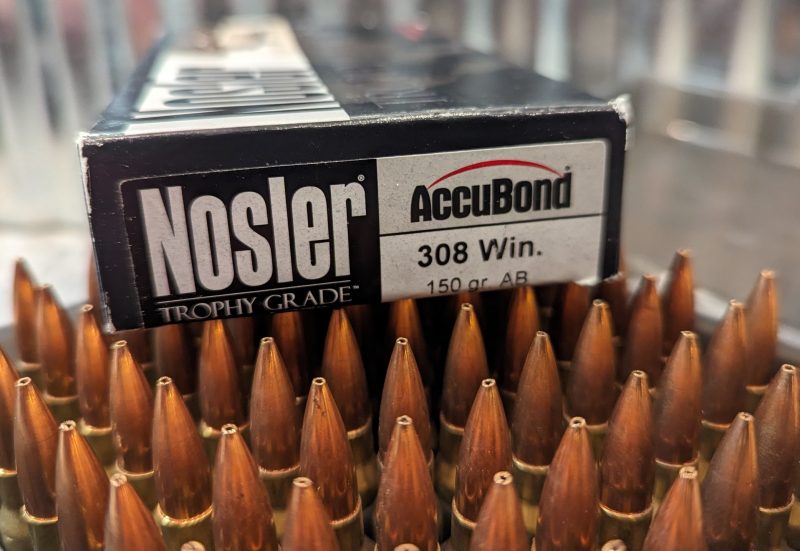
I’ve experienced some quirks with factory ammo. Backward primers in steel case Russian ammo, improperly labeled case head stamps, failure to fire, and so on with factory ammunition. This can certainly occur with reloads as well, but that’s a consequence of my own stupidity or carelessness. However, properly reloaded ammunition has extremely sound quality control. From measuring case wall thickness and length to powder charge measurements and bullet seating depth, reloaded ammunition has a level of consistency and repeatability rarely encountered with factory ammo.
Availability
While factory ammunition is convenient to grab straight off the shelf, it’s not always available. Earlier, I mentioned reloading supplies became scarce during prior ammo shortages. While relatively scarce, it was definitely easier to reload — and far more cost-effective — during ammunition shortages. Reloading was more expensive than usual but remained far cheaper than factory ammunition. When .223 and 5.56 were going for upwards of an absurd $800 to $1,000 per thousand rounds, I reloaded ammunition for half that.
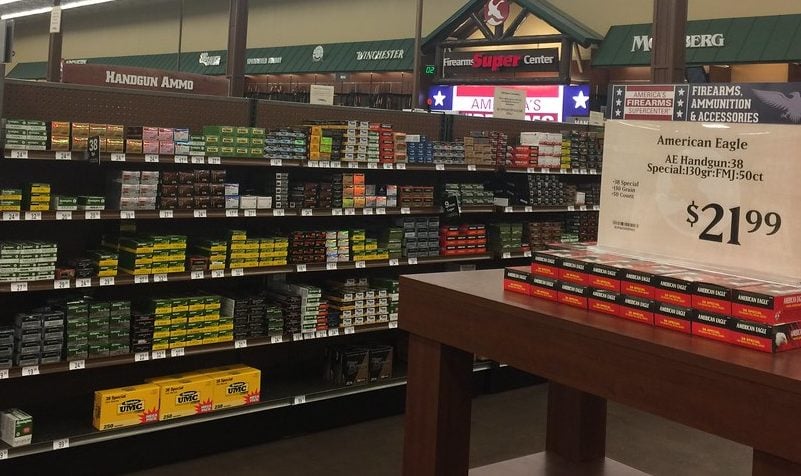
Beggars can’t be choosers, so I may not be able to reload with preferred components. However, in times of drought, I will never shake my fist at a sprinkling of rain. During those shortages, the available reloading components were a godsend and, if anything, expanded my personal database of available options and their respective performance. Ultimately, shortages make factory ammo hard to find and carry an associated premium that doesn’t translate quite as harshly to reloading components.
Reloading vs Factory Ammo: What’s Best for You?
Reloaded ammunition has a level of quality control, variety, and cost reduction not present with factory ammo. However, factory ammunition is convenient, reliable, and doesn’t require the up-front investment like reloaded ammo. Whether you want to expend your hard-earned money on reloading vs factory ammo, it’s a highly personal decision dictated by budget, available time, and personal interests. I’ve turned to both depending on the circumstances, needs, and interests of the time. How about you?


